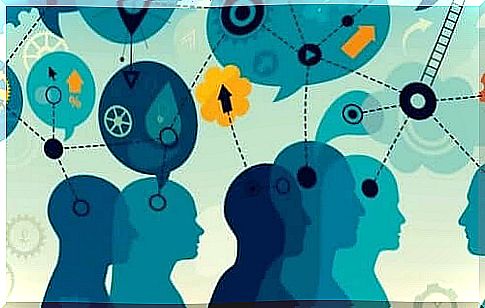Collaborative Intelligence – Think Tanks

Collaborative intelligence can be a transformative force for humans. Think tanks are groups where people can share ideas, thoughts and approaches with one common goal: the common good. Many believe that this kind of mental investment is what businesses, institutions, and any social scenario need most.
Working together and thinking about common goals is inspiring. However, you must admit that it is not always easy to reach them.
For example, working in a team intrinsically involves difficulties and differences of opinion. Nor has anyone taught you how to develop a collaborative mindset, or how to mobilize internal resources such as creativity, motivation and enthusiasm towards others, achieving a common harmony where everyone wins.
However, that is the key to the future. We need smarter companies, but also groups of people who can work together without their egos getting in the way. In other words, without friction and disabling that rigid thinking that causes you to put up so many barriers to progress and well-being.
People move forward with an increasingly complex present and future where you have to align efforts and resources in the same direction. How can you do that? Collaborative intelligence could be the key.

The Pillars of Collaborative Intelligence
Collective intelligence is a topic that has always been of interest to the fields of psychology, sociology and business. Moreover, biology has been studying this concept for centuries by observing it in the micro-universe of bacteria and, of course, in others that may be closer and more visible to you.
Thus, the collective behavior of animals is undoubtedly the most striking of all. Think of those flocks of birds flying in the same direction and always in perfect sync. Also visualize a school of fish, the swarms of krill, the groups of dolphins and of course that community of ants that make life parallel to yours in a garden, terrace or park.
What makes all these species symbiotic? Is it mere survival? It is possible. dr. Dawna Markova, an expert in learning, leadership and talent processes at MIT, points out in her book Collaborative Intelligence: Thinking with People Who Think Differently.
Learn to think along with people who think differently
One of the principles of collective intelligence is knowing how to be and knowing how to contribute to an environment where other people think differently. However, it is never easy to become that because, according to Dr. Markova, people are used to living in the depths of their own individuality.
You could say that people have learned to be more competitive than collaborative (which implies not accepting the opinions of others), meaning that you see the other as an enemy that you must overcome in competition to achieve your goals. Where do you get when you trade individually and competitively? Obviously nowhere.
In the same way, things change when you leverage your talent by adopting a collaborative mindset. After all, two thinkers think better than one. And because sometimes, if you think differently, you can combine your particular perspective with something bigger, more wondrous and inspiring.
Intellectual diversity is therefore bringing your strengths to the fore in a collective setting, where all individual strengths work together in harmony.
Align your intention with the intention of others
Talents shared in a common goal enable you to move forward. Something as inspiring as aligning your goals with those of others should be your daily motivation.
However, you must be aware that this is very difficult to achieve, because there are still many who want to be “the teacher’s darling”, the smartest, the one who does the most, the one who wants to reach higher than others, and the one that everyone wants to run over.
Therefore, one of the foundations of collective intelligence is to encourage yourself to change. It is time to create the most suitable conditions in which this type of competition can develop. Read on to find out how this works.

Keys to Collaborative Intelligence
José Ortega y Gasset means: “Civilization survives when many cooperate in the effort alone. On the other hand, if everyone would rather enjoy the proceeds, then civilization will perish.”
These righteous words are now more relevant than ever, because if there’s one thing everyone needs in the face of the challenges ahead, it’s brilliant minds who know how to work together.
In other words, each must bring their own excellence, creativity, experience and specific vision into the group to create a much larger whole that is focused on the same goals: progress and common good.
What are the mechanisms to achieve this? Here are the keys.
- Willingness and motivation to share knowledge and resources.
- Creating both physical and virtual collaborative spaces.
- Knowing how to build sufficient trust with others without competition, pride or control.
- The groups must therefore be horizontal and not vertical.
- It is essential to understand the dynamics of a group (know how to communicate, solve problems)
- Always open to new ideas.
- Having the right tools (physical spaces, training, but also virtual spaces where communication can thrive).
Finally, attitude is another element that requires collaborative intelligence. A committed attitude to change, where individualism and group vision weigh much less, of a community that knows how to work towards better progress.









